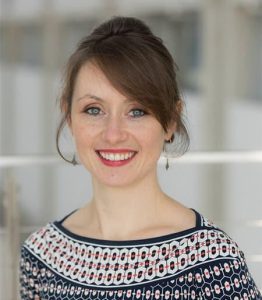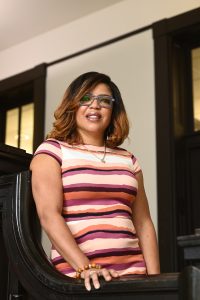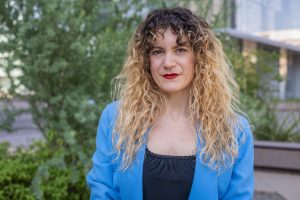This page is under construction. More details will be added as they become available.
Herzberg Memorial Public Lecture:
Monday, May 27, 19h30-20h30

Dr. John E. Moores
Science Advisor to the President, Canadian Space Agency & York University
John E Moores is the York Research Chair in Space Exploration, the Science Advisor to the President of the Canadian Space Agency and the Director of the Technologies for Exo/Planetary Science NSERC CREATE. He is a member of the Royal Society of Canada’s College of New Scholars, Artists and Scientists and the recipient of the Canadian Aeronautics and Space Institute’s 2022 McCurdy Award. John holds a B.A.Sc. from the University of Toronto and a Ph.D. from the University of Arizona in Planetary Science. An author on nearly 80 peer-reviewed publications in planetary science, John has also been a member of five NASA and ESA-led space mission teams and led the pre-selection development of the FROST Lyman-alpha imager manifested on the Canadian Lunar Rover currently in development, the first planetary exploration mission led by Canada. The contributions of his research group to robotic space exploration have been recognized with sixteen NASA group achievement awards. His first popular science book, Daydreaming in the Solar System, co-authored with colleague Jesse Rogerson, will be published by the MIT Press in October.
Our Celestial Rosetta Stone: Exploring our Family of Planets to Understand Processes Across the Cosmos
In the past 30 years, telescopes in space and on the ground have discovered thousands of extrasolar planets, providing us with a representative sample of the worlds that orbit other stars in our galaxy for the first time. However, our knowledge of these planets is limited to no more than a few datapoints for each one by the vast distances that separates us. Yet, though these places live mainly in our mind’s eye, we can construct remarkably accurate pictures of the processes which dominate their environments. We can do this because of our understanding of planetary processes that we have gained through 62 years of robotic solar system exploration. This hard-won experience, like a celestial Rosetta Stone, allows us to translate our sparse information about the exoplanetary realm into the language of our familiar solar family of planets. However, unlike the famous artifact, we can still write new chapters to the translation. Exoplanets tell us about the full diversity of worlds and their circumstances while robotic space exploration missions consider a single representative world from that set up close. Thus, exoplanetary astronomy and solar system exploration are disciplines in dialogue. By deeply interrogating our nearest neighbors we can expand our understanding of planets everywhere.
Medal talks return to Congress!
More information will be posted once the 2024 medal recipients have been selected.
Plenary Speakers:
(More to come!)

Dr. Natasha Holmes | Cornell University
Monday, May 27th, Time TBC
Natasha G. Holmes is the Ann S. Bowers Associate Professor in the Department of Physics at Cornell University, with the Laboratory of Atomic and Solid State Physics. Prof. Holmes received her BSc in physics from the University of Guelph and her MSc and PhD in physics at the University of British Columbia. She then went on to do her postdoctoral work at Stanford University with Prof. Carl Wieman. Her research group studies anything to do with physics laboratory courses, from student learning, attitudes, and skill development to the equity of lab group work to understanding how we measure and assess student outcomes quantitatively.
Putting the Experiment Back in the Lab
What is the purpose of an introductory physics lab? Often instructional labs are structured such that students perform experiments to observe or discover classic physics phenomena. In this talk, I’ll present data that questions this goal and argues for transforming labs to focus instead on the skills and understandings of experimental physics. I’ll provide several examples of experimentation-focused labs and research on their efficacy for students’ skill development.

Dr. Ebony McGee | John Hopkins University
Tuesday, May 28th, Time TBC
Dr. Ebony O. McGee is a Professor of Innovation and Inclusive STEM Education at Johns Hopkins University’s School of Education and in the Department of Mental Health, School of Public Health. An electrical engineer by training, Dr. McGee studies race and structural racism in the traditional STEM ecosystem, and the mental/physical health consequences of STEM education and occupations for Black and other minoritized folk.
Visit the R-RIGHTS website at https://r-rights.org/
Visit the ICQCM website at https://www.icqcm.org/
LinkedIn Page: https://www.linkedin.com/in/ebony-mcgee-b0328211/
X/Twitter: @Relationshipgap
Ebony O. McGee, Plottin 4A Black STEM Revolution (@RelationshipGAP) / X (twitter.com)
Disrupting Normativity: A Critical Examination and Reconstruction Towards a Structurally Inclusive STEM Curricula/Culture
Those who lead industry and educational institutions and particularly those who teach need to acknowledge that their own STEM education is characterized by (1) the exclusion of non-Whites from positions of power, which almost completely erases Indigenous theories and contributions to STEM; (2) the development of a White frame that organizes STEM ideologies and normalizes White racial superiority; (3) the historical construction of a curricular model based on the thinking of White elites, thus disregarding minoritized cultures that contributed to STEM globally; and (4) the assertion that knowledge and knowledge production are neutral, objective, and unconnected to power relations. STEM education and occupations were designed to attract White men who are heterosexual, able-bodied, middle class, and upper class, and, more recently, some East Asian groups designated as acceptable. Therefore, the curriculum and products of this culture contribute to an inhospitable environment for students, faculty, and employees who do not fit these criteria.
The subsequent segment of the presentation aims to delineate an innovative STEM curriculum that eminently acknowledges and validates the racial identities and firsthand experiences of students who have been historically relegated to the periphery of mainstream education. The centrality of this curriculum lies in its unabashed focus on pressing social matters, utilizing these as the pivotal catalyst around which STEM education is designed and delivered. The significance of this curricular approach guides the shift away from a traditional, monocultural lens of teaching STEM, which often inadvertently buttresses systemic barriers, towards a more culturally responsive and socially conscious pedagogical design. By locating the lived experiences and racial identities of marginalized students at the paradigm’s core, the curriculum serves to affirm their voices and perspectives, thereby fostering a more inclusive and equitable educational environment.
Further, by intertwining STEM learning with real-world social issues, the curriculum fosters the development of critical thinking and problem-solving skills, crucial competencies for the 21st-century workforce. It empowers learners to understand, engage with, and propose solutions to real-world challenges using STEM principles. Intrinsically, it instigates a more holistic understanding of STEM, one that transcends the conventional boundaries of textbook learning and plants the seeds for nurturing socially conscious, scientifically literate individuals. Therefore, this innovative, context-driven approach to STEM instruction not only serves as a powerful tool to counter educational exclusion and disparity, but it also equips students with the aptitude and motivation to apply learned concepts in addressing socially relevant issues, thereby redefining the landscape of meaningful and impactful education.

Dr. Sara Walker | Arizona State University
Thursday, May 30th, Time TBC
Sara Imari Walker is deputy director of the Beyond Center for Fundamental Concepts in Science and a professor in the School of Earth and Space Exploration at Arizona State University. She is also a fellow of the Berggruen Institute and a member of the external faculty at Santa Fe Institute. Trained in theoretical physics, her research program focuses on the origin of life and discovering alien life on other worlds by bridging theory and empirical measurement to solve open challenges in identifying the universal physics (if it exists) underlying life in the universe. Her honors include being a recipient of a Schmidt Science Polymath Fellowship to explore new ideas across disciplines. She is a recipient of the Stanley L. Miller Early-Career Award for her research on the origin of life, and her team at ASU is internationally regarded as being among the leading labs aiming to build a fundamental theory for understanding what life is.
Assembly Theory, Unlocking the Physics of Life
What is life? This is among the most difficult open problems in science. The definitions we have now all fall short. None help us understand how life originates from planetary chemistry, nor do they account for the full range of possibilities for what life on other planets might be like. One approach has been to ask whether our current theories of physics are up-to-task. This was the approach adopted by the quantum physicist Erwin Schrodinger in his famous series of lectures addressing the topic “What is Life?”, which he delivered in 1943. But, what Schrodinger ultimately argued was that while life can be shown to be consistent with the known laws of physics, it also cannot be explained by them. In this talk I briefly review motivations for why our current theories of physics are not suited to solving the problem of life and why solving the origin of life may require radical new thinking and an experimentally testable theory for what life is. I discuss one promising new approach, Assembly Theory, useful for identifying and classifying “life” in terms of universal physics. If proven, the theory should apply not just to biological life on Earth but to any instance of life in the universe, even life as no one yet knows it. I discuss the foundations of the theory, what insights it provides into the origins of biochemistry, and how we might experimentally explore the origins of alien life in the lab with large scale experiments.

Dr. Catherine Neish | Western University
Friday, May 31st, 8:15-9:00am
Catherine Neish is an Associate Professor of Earth Sciences at the University of Western Ontario. She uses orbital radar observations to study the geology of planetary surfaces, with a particular focus on processes related to impact cratering. She is involved in several spacecraft missions, serving as a Co-I on NASA’s Lunar Reconnaissance Orbiter Mini-RF instrument and NASA’s Dragonfly mission.
Dragonfly: A Rotorcraft Lander at Titan
On June 27, 2019, NASA announced its next New Frontiers mission: Dragonfly. This audacious mission will send a rotorcraft to explore Saturn’s largest moon Titan, and evaluate its potential for prebiotic chemistry and (possibly) extraterrestrial life. The Dragonfly mission will also give us a countless high-resolution views of this strangely Earth-like moon, showing us how rivers and sand dunes form on an icy moon with a thick atmosphere. In this presentation, I will provide a summary of the history of the Dragonfly mission, its scientific goals, and the next steps forward, from launch in 2028 to landing in the mid-2030s.
